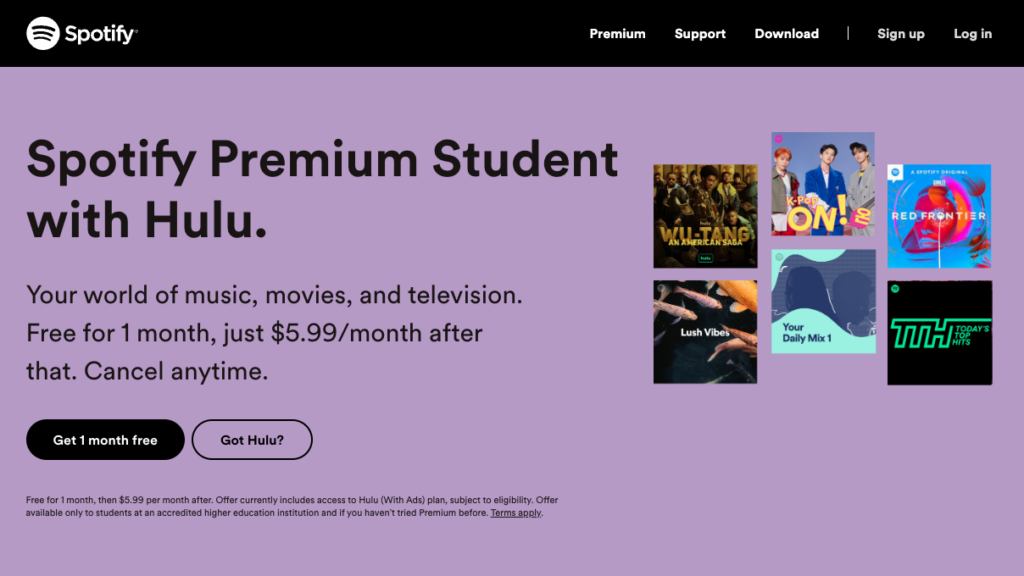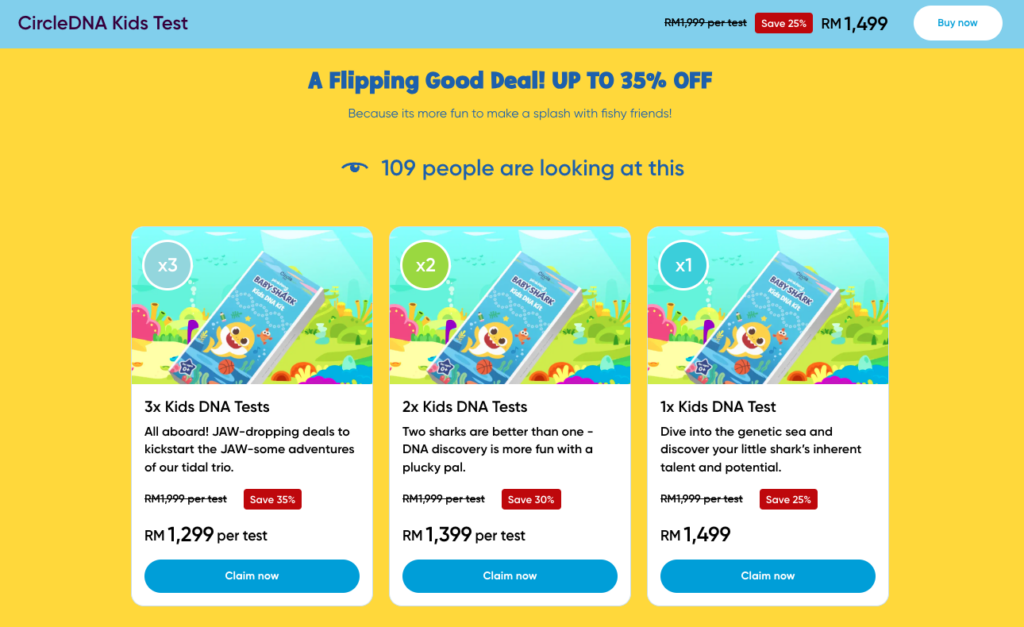
Have you ever scrolled through social media and found yourself inexplicably drawn to a product advertised by your favorite influencer? Or perhaps you’ve walked into a store with a specific item in mind, only to leave with a completely different purchase after being swayed by a strategically placed display? This, my friend, is the powerful marketing psychology in action.
Marketing psychology is the art and science of understanding these forces and using them to influence consumer behavior in a positive and ethical way. It delves into the subconscious mind, exploring how emotions, biases, and mental shortcuts shape our purchasing decisions.
By understanding these factors, marketers can craft compelling messages, design user-friendly experiences, and build trust with their audience, ultimately leading to increased brand awareness, customer loyalty, and sales.
In this article, we’ll explore core principles like social proof, scarcity, and emotional marketing, and delve into how they can be leveraged ethically to create effective marketing campaigns. We’ll also discuss the importance of building brand trust and explore the future of marketing psychology, where personalization and cutting-edge technologies are changing the game.
Table of Contents
Benefits of Using Marketing Psychology

By understanding the underlying psychological principles that drive consumer behavior, marketers can achieve significant benefits.
Increased Brand Awareness
Marketing psychology helps craft targeted messages that resonate with the right audience. This targeted approach allows brands to cut through the noise and reach potential customers more effectively, leading to increased brand awareness and recognition.
Enhanced Customer Loyalty
Marketing psychology helps craft targeted messages that resonate with the right audience. This targeted approach allows brands to cut through the noise and reach potential customers more effectively, leading to increased brand awareness and recognition.
Boosted Sales and Conversions
By leveraging psychological principles like scarcity and urgency, you can create a sense of desire and nudge consumers towards making a purchase. Additionally, understanding user experience (UX) principles can optimize your website and marketing materials to guide users seamlessly through the conversion funnel.
Integrating these insights empowers marketers to craft persuasive campaigns that trigger desired actions, such as purchases or website signups, ultimately optimizing for conversions and driving measurable results.
By incorporating marketing psychology into your marketing strategy, you can move beyond one-size-fits-all messages and create targeted campaigns that truly connect with your audience. This translates to a more engaged customer base, increased brand loyalty, and ultimately, a significant boost to your bottom line.
Now, let’s explore some key principles that influence consumer behavior.
Core Psychological Principles in Marketing
Social Proof: The Power of the Crowd
Imagine you’re in a new restaurant and see everyone raving about a specific dish. Suddenly, that dish becomes much more appealing, right? This phenomenon is called social proof, the tendency for people to rely on the actions of others to make decisions. We trust the choices of the majority, assuming their behavior reflects a good option.
With that said, marketers can leverage social proof in several ways. You can feature positive testimonials and reviews from satisfied customers on your website and marketing materials. Platforms like Google My Business and product review sections on e-commerce websites also can be harnessed to showcase genuine customer experiences.
Moreover, partnering with influencers who resonate with your target audience allows you to tap into their established trust and credibility. Influencers can promote your products or services in a natural and authentic way, influencing their followers’ purchasing decisions.
Additionally, sharing user-generated content, such as social media posts or photos featuring your products, demonstrates real-world use and social acceptance. This can be particularly powerful for building brand loyalty and attracting new customers.
A prime example is the Sephora’s Beauty Insider program. Their loyalty program rewards customers for purchases, encouraging repeat business. Additionally, Sephora leverages user-generated content by featuring customer reviews and makeup tutorials on their website and social media platforms.
Scarcity and Urgency: Fear of Missing Out (FOMO)
Loss aversion, the tendency to feel the pain of loss more intensely than the pleasure of gain, plays a significant role in consumer behavior. Marketers can utilize this concept by creating a sense of scarcity and urgency, prompting users to take action before they miss out on a valuable opportunity.
The most common example is limited-time offers, like flash sales or discounts expiring at a specific time; they create a sense of urgency and encourage immediate purchase decisions.
Visually displaying countdown timers on product pages or promotions adds a layer of urgency as well, subtly pressuring users to complete their purchase before time runs out.
One may also create a sense of exclusivity by launching limited-edition products or offering early access to select customers can drive excitement and encourage pre-orders or early purchases
Authority: Trusting the Experts
People tend to trust authority figures and experts in their fields. Leveraging this principle through the concept of authority can significantly impact brand perception and purchasing decisions.
One effective strategy is to prominently display certifications and industry awards earned by the company or product. These accolades serve as tangible evidence of expertise and competence, particularly valuable in industries where trust is paramount.
Moreover, forging partnerships with industry leaders or subject matter experts to endorse products or services can further bolster brand authority. Testimonials, interviews, or co-branded marketing initiatives with renowned figures lend a sense of validation and expertise to the brand’s offerings.
Additionally, featuring industry leaders utilizing the brand’s products or services can subtly reinforce consumer trust. Whether through detailed case studies, compelling testimonials, or engaging social media content, showcasing the endorsement of respected figures within the industry can instill confidence and credibility in the brand.
For instance, Colgate positions dentists as authority figures on oral health, leveraging their expertise to promote their toothpaste products.
Reciprocity: The Power of Giving Back
The principle of reciprocity revolves around the human tendency to return favors. Marketers can leverage this principle by offering incentives that encourage customers to engage with the brand.
One effective strategy is offering free samples or product trials, allowing potential customers to experience the product firsthand without commitment. By lowering the barrier to entry, this approach encourages future purchases and builds goodwill with consumers.
Implementing loyalty programs is another way to leverage reciprocity. By rewarding loyal customers with points, discounts, or exclusive benefits, brands encourage repeat business and demonstrate appreciation for ongoing support. Additionally, loyalty programs can provide valuable customer data for more targeted marketing efforts.
Furthermore, providing early-bird discounts or special offers for pre-orders or early sign-ups can incentivize early engagement and demonstrate gratitude towards early adopters. This approach not only fosters reciprocity but also helps generate momentum for new products or services.
For example, Spotify offers discounted subscriptions for students, demonstrating appreciation for this specific customer segment and encouraging them to choose Spotify over competitors.

Emotional Marketing: Tapping into the Heart
Emotions play a significant role in influencing purchasing decisions. Effective marketing campaigns evoke emotions that resonate with the target audience and create a connection with the brand. Here are some tactics to consider.
Storytelling is a potent strategy. Crafting compelling brand stories that evoke positive emotions like happiness, nostalgia, or inspiration can create a deeper connection with consumers, making them more receptive to your message.
Humor serves as another effective tool, enabling brands to connect with their audience on a relatable level. However, it’s essential to strike the right balance and ensure that humor aligns with the brand’s image.
Evoking nostalgia by recalling positive memories associated with past trends or experiences can trigger positive emotions, fostering a sense of comfort and familiarity with the brand.
Fear appeals, while powerful, should be used cautiously. They can effectively raise awareness about potential problems and position the brand’s product as the solution. However, it’s crucial to avoid manipulative tactics and instead focus on addressing genuine safety concerns.
Cognitive Biases: Using Shortcuts Wisely
Our brains rely on mental shortcuts, called cognitive biases, to make quick decisions. Understanding these biases allows marketers to craft targeted messages that align with how consumers naturally think.
One of the common cognitive biases in marketing is anchoring. Anchoring refers to the tendency to heavily rely on the first piece of information presented, such as highlighting the original price before a discount. By strategically framing initial information, marketers can influence perceptions and guide decision-making processes.
Next is framing. It involves presenting information in a way that influences its perception, such as focusing on the positive outcomes of using a product. By framing messages in a favorable light, marketers can shape consumer attitudes and preferences.
Then we have the Bandwagon Effect, which reflects the tendency to follow the crowd, as seen in showcasing high customer numbers or social proof. Leveraging this bias can create a sense of belonging and validation, encouraging consumers to align with popular choices.
For example, CircleDNA displays the number of people currently looking at their DNA kit. This tactic leverages the bandwagon effect, subtly pressuring users to book a room if others are seemingly interested.

Now that we’ve explored the core psychological principles that influence consumer behavior, let’s delve into how marketers can leverage this knowledge to craft effective campaigns and achieve their marketing goals.
Putting Psychology into Practice
Crafting Compelling Marketing Messages
The first step to influencing consumer behavior is crafting clear, concise, and benefit-oriented messages. People are bombarded with information daily, so your marketing message needs to cut through the noise and resonate with your target audience.
One key strategy is to focus on benefits rather than features. Don’t just list product features; explain how those features translate into benefits for the customer. For example, instead of simply stating ‘Long battery life,’ highlight how it allows users to ‘enjoy uninterrupted music playback throughout the day,’ as M&M’s classic slogan ‘Melts in your mouth, not in your hands’ memorably conveyed the benefit of their chocolates.”
Next, keep it simple. Avoiding technical jargon and using clear, concise language ensures that your message is easily understood by your target audience.
Furthermore, it’s essential to tailor your messages to address your audience’s specific needs and aspirations. By showcasing how your product or service solves their pain points and fulfills their desires, you can establish a stronger connection with your audience.
Lastly, incorporating strong calls to action (CTAs) prompts your audience to take the desired next step, whether it’s visiting your website, signing up for a free trial, or making a purchase. By guiding your audience towards specific actions, you can increase engagement and drive desired outcomes.
By following these principles, you can craft compelling marketing messages that cut through the noise and resonate with your target audience.
Optimizing Website Design for User Behavior
Your website is a crucial touchpoint for potential customers. Optimizing its design with psychology in mind can significantly impact user experience (UX) and conversions.
Consider the layout of your website, as users tend to scan webpages in an F-shaped pattern, focusing primarily on the top left before moving across the top and down the left side. Placing important content and calls to action (CTAs) in these high-visibility areas can increase engagement and conversions.

Moreover, colors play a significant role in evoking emotions and influencing user behavior. When selecting website colors, consider your target audience and the message you want to convey. For instance, blue often signifies trust and security, while red can evoke urgency and excitement.
Ensure that your website features user-friendly navigation, allowing visitors to find information quickly and intuitively. A well-organized navigation structure enhances usability and encourages visitors to explore your website further.
Given the increasing prevalence of mobile browsing, it’s crucial to optimize your website for mobile devices. A responsive design ensures a seamless experience across all devices, accommodating users’ preferences for browsing on smartphones and tablets. By prioritizing mobile optimization, you can reach a broader audience and maximize engagement with your website.
By incorporating these design principles, you can create a user-friendly website that guides visitors towards taking the desired action.
The Power of Storytelling
Stories have the power to connect with us on an emotional level, making them a powerful tool in marketing.
Effective stories possess a unique ability to evoke positive emotions such as happiness, nostalgia, or inspiration, thereby establishing a deeper connection between the audience and the brand. Take a look at Nike’s inspirational campaigns, which often feature stories of athletes overcoming challenges. By connecting with viewers on an emotional level through storytelling, Nike strengthens brand loyalty and motivates audiences to achieve their own goals.
Moreover, sharing your brand story humanizes your company, making it more relatable to your audience. By providing insight into your brand’s journey, values, and ethos, you can cultivate authenticity and trust among consumers.
Furthermore, stories are inherently more engaging and memorable than straightforward facts and figures. They have the capacity to make information more compelling and relatable. For instance, recounting a story about a satisfied customer’s experience is likely to resonate more with the audience than simply listing product features.
By incorporating storytelling into marketing strategies, brands can effectively captivate their audience’s attention, forge stronger emotional bonds, and leave a lasting impression that drives brand loyalty and engagement.
Tips for Crafting Effective Brand Stories:
- Focus on Your Audience: Keep your target audience in mind and craft a story that resonates with their experiences and aspirations.
- Highlight Your Values: Your brand story is an opportunity to showcase your company’s values and mission.
- Keep it Authentic: People can spot inauthenticity a mile away. Be genuine and transparent in your storytelling.
- Use Emotional Language: Don’t be afraid to evoke emotions through your storytelling.
- Include a Call to Action: Tell your audience what you want them to do after hearing your story.
Building Brand Trust and Credibility
In today’s digital age, trust is more important than ever for brands. Consumers are more likely to do business with companies they trust and perceive as credible.
One of the strategies to build brand trust and credibility is fostering a strong brand community. By actively engaging with customers on social media platforms, promptly addressing inquiries and concerns, and creating a sense of belonging, brands can instill trust and loyalty among their audience.
Providing exceptional customer service is another cornerstone of building trust. Going above and beyond to resolve issues and ensure customer satisfaction not only enhances trust but also encourages repeat business and positive word-of-mouth referrals.
Additionally, transparency in communication is key to building long-term relationships with consumers. Maintaining honesty and integrity in all interactions, avoiding misleading information or hidden fees, demonstrates a commitment to transparency and earns the trust of the audience.
The Future of Marketing Psychology
The field of marketing psychology is constantly evolving. Here’s a glimpse into some emerging trends.
Personalization stands at the forefront, harnessing data and technology to tailor marketing messages and experiences to individual customer preferences. By delivering content and offers that resonate with each consumer, personalization creates a more relevant and engaging experience, driving stronger connections and higher conversion rates.
Neuromarketing represents a cutting-edge approach, delving into brain activity to decode how consumers respond to marketing stimuli. Insights from neuromarketing studies enable marketers to craft even more targeted and impactful campaigns, tapping into subconscious cues to influence purchasing decisions effectively.
Artificial Intelligence (AI) is revolutionizing marketing practices, empowering brands to analyze vast amounts of customer data and deliver personalized campaigns in real-time. Additionally, AI-driven chatbots are enhancing customer support by providing round-the-clock assistance, improving overall customer experience and fostering brand loyalty.

Ethical Considerations
The field of marketing psychology is a powerful tool, but with great power comes great responsibility. Marketers have an ethical obligation to use these techniques in a responsible and trustworthy manner. Here are some key considerations:
Transparency and Honesty
Building trust with consumers requires transparency in marketing messages. Avoid misleading information, exaggerated claims, or hidden fees. Strive for clear and truthful communication that accurately reflects your products or services.
Respecting User Privacy
Consumers have a right to privacy. Marketers should obtain user consent for data collection and use it responsibly. Following data protection regulations and providing clear opt-out options for marketing communications demonstrates respect for user privacy.

Avoiding Manipulation
Marketing psychology should be used to influence, not exploit. Marketers should avoid tactics that prey on vulnerabilities or create a sense of urgency that pressures consumers into making rash decisions. The goal should be to inform and educate, allowing consumers to make informed choices.
By adhering to these ethical principles, marketers can build trust with consumers and ensure the long-term sustainability of their practices. Ultimately, ethical marketing benefits both businesses and consumers by fostering positive and mutually respectful relationships.
Closing Thoughts
Marketing psychology empowers marketers to understand consumer behavior and craft impactful campaigns. This guide explored core principles like crafting compelling messages, optimizing website design, and building trust through storytelling. By leveraging these insights, you can connect with your target audience on a deeper level and achieve your marketing goals.
The future of marketing psychology is brimming with potential. Personalization, neuromarketing, and AI hold the promise of even more effective and targeted marketing strategies. However, this power must be wielded responsibly. Transparency, respect for user privacy, and avoiding manipulative tactics are paramount for building trust and ensuring a positive impact.
In essence, ethical marketing psychology fosters a win-win scenario. By informing and empowering consumers while achieving business objectives, marketers can build long-lasting and mutually beneficial relationships.
Related Article:
The following article may contain the author’s opinions and interpretations of the subject matter. Any of the products, services, or platforms mentioned is not sponsored or affiliated.
Featured Image courtesy of Freepik
